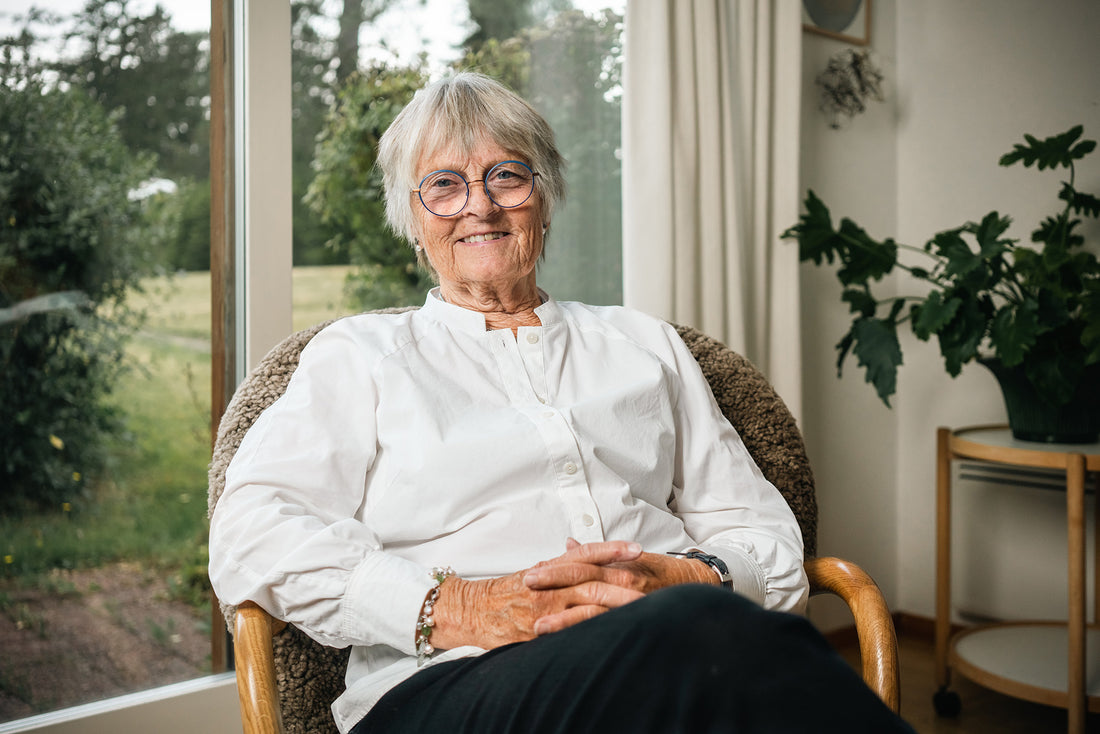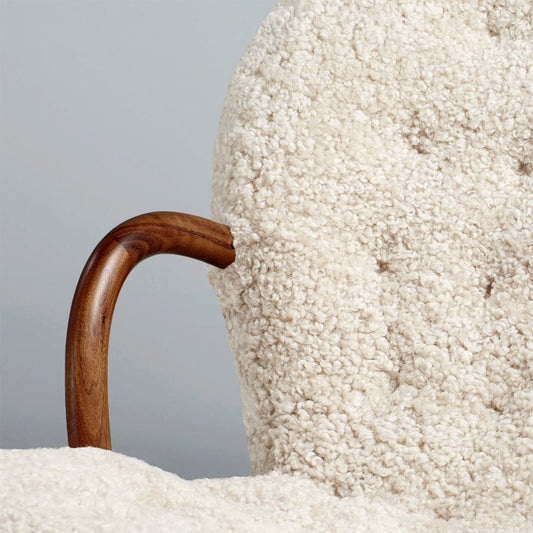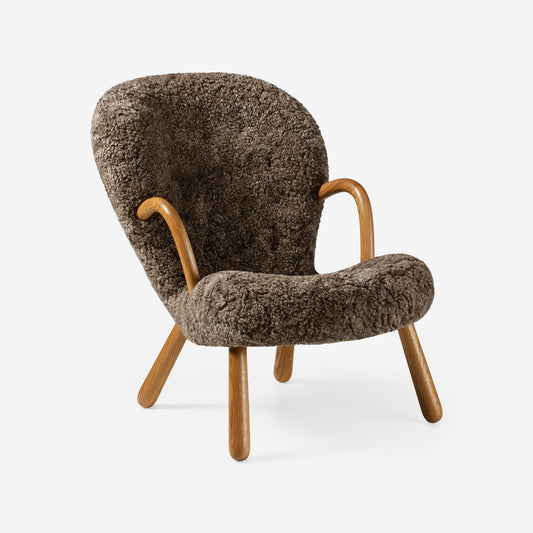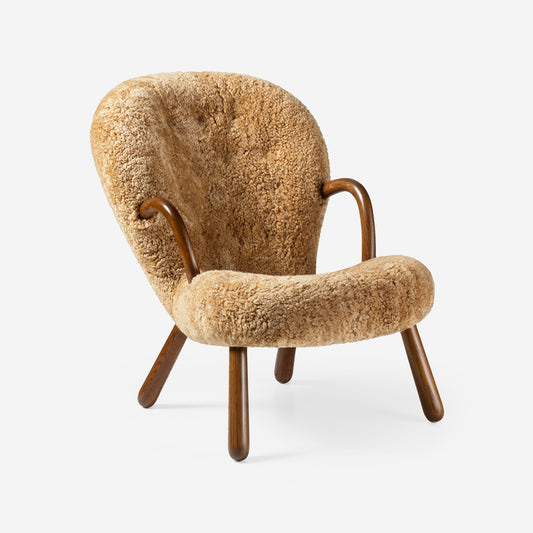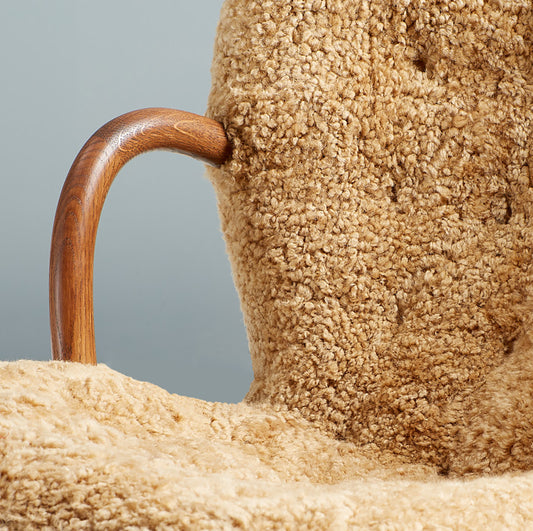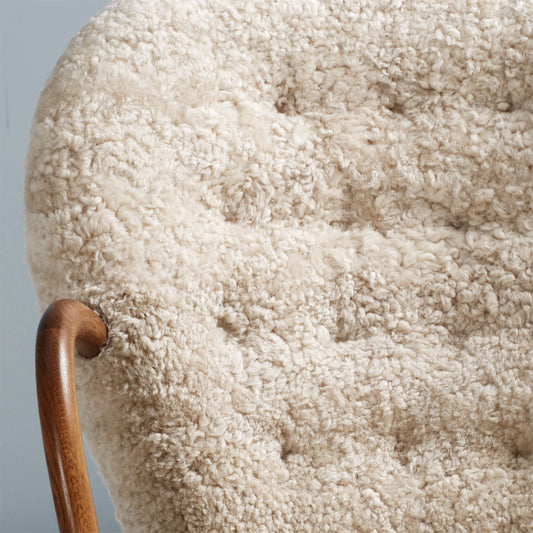Johna Møhring-Andersen sat down with Dagmar Editor, Oliver Fischer, to discuss the man behind the designs
Oliver Fischer (OF): What distinguished your father, Arnold Madsen, as a person?
Johna Madsen (JM): Like every person, he had many sides. He was certainly a good designer, but he was not so much a part of the furniture community in Denmark. He hardly knew any of the other designers of the day, nor did he see himself as an artist. He was more of an inventor who constantly had interesting ideas and was always looking for new ways to solve problems. The unusual shape of the Clam Chair is one example of his inventiveness, but there are many others.
(OF): Can you tell us about some of these?
(JM): My father was always experimenting with materials and making things with his hands. In our house he had a room of his own with a worktable where he would spend hours experimenting until he had an idea. He followed the same process with his furniture design; in particular the Clam Chair and the Oda Chair (Model 7).
(OF): Johna, you were born in 1943, a year later your father designed the Clam Chair. What role did the history of the chair play in your family?
(JM): My father was a man of few words, but the Clam Chair was always part of our family; Arnold was a furniture man, after all. He regularly changed the furniture in our home and we always had the latest models from his company, (Madsen & Schubell) in the house to try out. My father was also a generous man, and he gave away many of the chairs he made to members of our family. One Clam Chair ended up in my uncle's house and I can still remember the amusing sight of this huge man sitting in a rather small armchair. Another Clam Chair was gifted to my cousin for her wedding. We also had a second home in Gentofte, outside Copenhagen, where a Clam Chair had pride of place in my brother Ib's room.
 An armless Clam Chair at Johna's uncle's house
An armless Clam Chair at Johna's uncle's house
There is a song that the Madsen & Schubell factory workers wrote for my father for his 50th birthday. In the lyrics they say that the Clam Chair saved my father and this is somewhat true. It was the first piece of furniture he designed and its success made it possible for him to earn money during the German occupation of Denmark during World War ll and and in the period after liberation.
(OF): Is it true that Arnold learned to weld in order to develop this chair?
(JM): That is exactly right. He had an idea in his head that no one had achieved before. He wanted to develop a chair that was shaped and held together by a metal ring. But because he was not an architect, he could not simply draw the chair so he made the first prototype himself. To be precise, he took a welding course and then spent weeks in the company factory working on the first prototype. The workers thought he had gone completely mad - but he did not stop until the frame was exactly as he had imagined it. The chair went on to be a huge success for the company and is still produced today.

Madsen & Schubell's Model 6 Chair from 1954 and Arnold's visionary Oda Chair
(OF): Was Arnold also handy around the house in other ways?
(JM): Yes, he could do everything. He helped me sew clothes, he built things in the house - and he even lost a finger once in the process. Later in life when he had problems with his eyesight, he wanted to develop glasses that could rotate. He found an optician who worked with him on this project, but the experiment ultimately failed. We still have the remains of the frames in our house!
(OF): In his youth, Arnold lived a varied and colourful life. He lived in the USA for a year, learned rodeo riding and even spent some time in prison.
(JM): He went to prison because he had entered America illegally before the war and at some point in his travels he was caught stealing winter clothes. As far as I know, he did not have a bad time in prison. After he returned to Denmark he completed an apprenticeship as an upholsterer and later opened his own workshop in Copenhagen where he designed the Clam Chair and made the first model. This is where the story of Madsen & Schubell began.
(OF): Did he continue as an upholsterer when the company became successful?
(JM): He was primarily a manager and spent most of his time in the office. He had strong principles concerning his furniture and wanted it to be sold only in the best shops in Denmark. It was important to him that there was always a good atmosphere in the company and his employees considered him to be a good boss. Most of them stayed with the company for many years.


Madsen & Schubell's factory, c1950s
(OF): How would he feel about some of his designs being produced again after 70 or more years?
(JM): He would be very happy - especially as the bankruptcy of the company in the 1980s hit him hard. The fact that there is a demand for his chairs again today would certainly make him proud. However, he would have shaken his head in disbelief at the prices the original Clam Chairs are sold for now at auctions!

